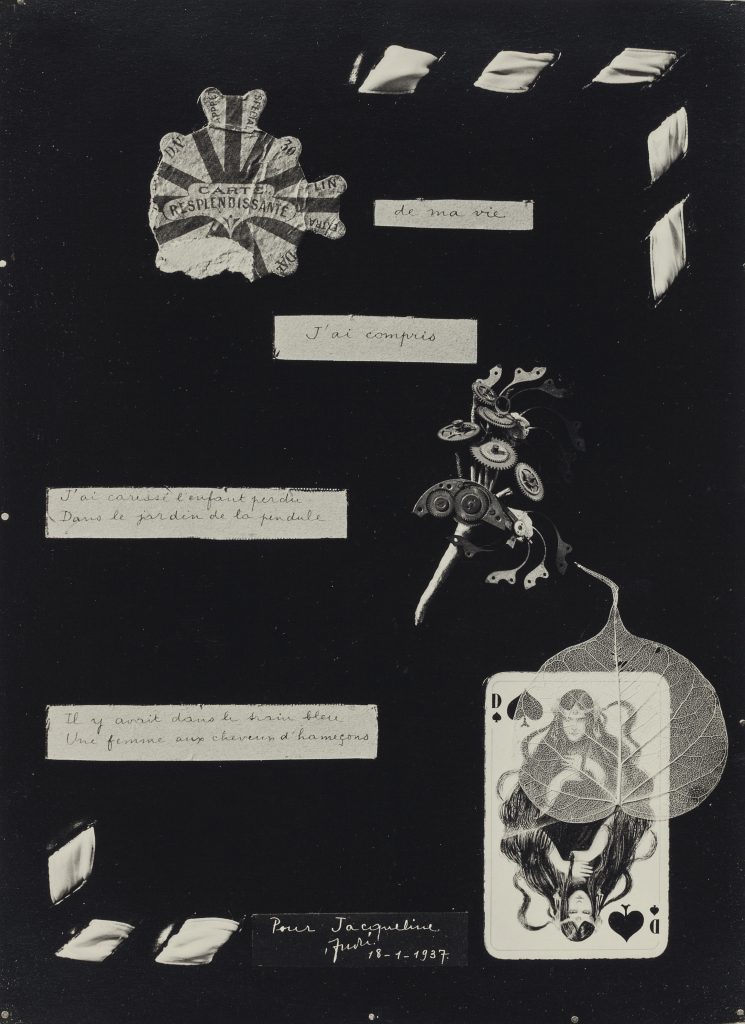Man Ray (1890-1976)
Poème objet à Jacqueline, 1937
Gelatin silver bromide print
Courtesy of the Leonid and Tatiana Nevzlin Collection
Man Ray, an American who settled in Paris, was a prominent figure in both the Dada and the Surrealist movements. Best known for his photography, he also worked with photograms, which he called “Rayographs.” These found, photographed, transformed or created objects were a free association of words and ideas that represented unconscious activity.
Must Know
Emmanuel Radnitsky grew up in New Jersey and became a commercial artist in New York in the 1910s. he began to sign his name Man Ray in 1912. he initially taught himself photography in order to reproduce his own works of art, which included paintings and mixed media. In 1921 he moved to Paris and set up a photography studio to support himself. There he began to make photograms, which he called “Rayographs. he became part of the artistic and intellectual elite, forming relationships with James Joyce, Gertrude Stein, Max Ernst and Picasso.
Man Ray had been one of the instigators of Dada in New York in the 1910s. Soon after his arrival in Paris in 1921, the randomness and irrationality of Dada began to be replaced by the fantasy and incongruity of Surrealism. Neither movement had been motivated by the production of visual artifacts; rather, both sought to give expression to the unconscious. Through his innovative use of the photographic medium, Man Ray carved a niche for himself in the Surrealist circle and contributed a distinct visual character to a movement that was firmly grounded in literary and psychoanalytic theory.
Man Ray was forced to return from Paris to the United States due to the Second World War. he lived in Los Angeles from 1940 to 1951 where he focused his creative energy on painting.
Man Ray returned to Paris in 1951 and died in Paris in 1976.
Jacqueline Goddard (née Barsotti, 1911-2003) was a favourite model and close friend of Man Ray. She also modelled for Matisse, Giacometti and Picasso. Man Ray embraced the possibilities for irrational combinations and chance arrangements of objects, emphasizing the abstraction of images made in this way.

